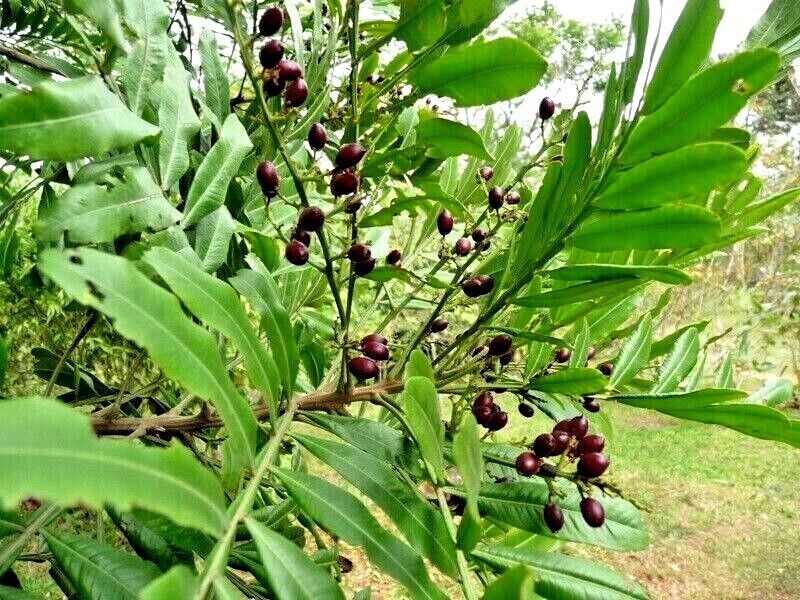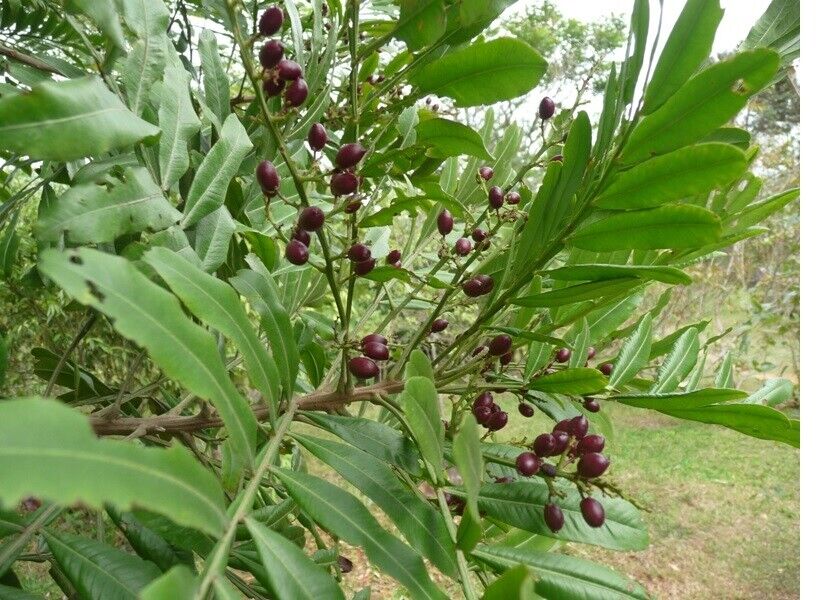Blog
The Hidden Medicine in Your Garden: Unlocking the Power of the Fern Tree (Filicium decipiens)

Filicium decipiens Overview
Chances are, you’ve seen this tree before. You may have even admired it. With its lush, symmetrical canopy of glossy, fern-like leaves, the Fern Tree is a celebrated beauty in tropical and subtropical gardens around the world. It lines boulevards and graces parks, a picture of perfect, ornamental elegance.
But what if this beautiful decorative tree held a profound secret? What if, hidden within its graceful leaves and sturdy bark, was a history of potent traditional medicine, a natural pharmacy used for centuries to heal the body?
This is the story of Filicium decipiens. While it has earned its fame as a landscape artist’s favorite, its true power lies in its forgotten role as a healing herb. Today, we’re looking past its ornamental beauty to uncover the remarkable health benefits that traditional healers have long known and cherished.
Beyond the Garden: A Tree of Many Names

While it’s most commonly recognized by its looks, this tree has a few key identifiers that are important for anyone looking to understand its full story.
- Scientific Name: Filicium decipiens. This is the universal, botanical name that ensures you are talking about the correct plant, a cornerstone for any serious herbal research.
- Common English Names: Fern Tree, Japanese Fern Tree. These names are a direct nod to its beautiful foliage, which, while not a true fern, perfectly mimics its delicate appearance.
- Origin: Native to regions across East Africa and tropical South and Southeast Asia, its use in traditional medicine is as widespread as its natural habitat.
The “Bone-Setter’s” Secret: Filicium decipiens for Fractures and Pain
One of the most remarkable and specific traditional uses of the Fern Tree is as a “bone-setter” herb. In various systems of folk medicine, it has been a go-to remedy for supporting the body’s natural healing process after sustaining fractures, sprains, and other physical injuries.
Of course, it doesn’t magically set the bone, but it provides powerful supportive care.
How is it traditionally used? A poultice or thick paste is made by crushing the fresh leaves and bark. This paste is then applied externally around the area of a fracture (often over a bandage or alongside a splint) or directly onto a painfully swollen joint or sprain.
The traditional wisdom behind this application points to two key properties:
- A Potent Anti-inflammatory: Filicium decipiens is rich in compounds that exhibit strong anti-inflammatory effects. When applied topically, it is believed to dramatically reduce the swelling, redness, and inflammation associated with an injury. By calming this inflammatory response, the body can dedicate more resources to healing and repair.
- A Natural Pain Reliever (Analgesic): Alongside reducing inflammation, the herb is also known to have analgesic properties, helping to soothe and numb localized pain. For anyone who has suffered a sprain or a fracture, this immediate, cooling relief is invaluable.
This potent combination makes it a traditional first-aid kit from the forest floor, not just for fractures but for the general aches and pains of arthritis, rheumatism, and muscular bruising.
More Than Skin Deep: The Internal Benefits of the Fern Tree

While its topical use for pain is impressive, the internal benefits of Filicium decipiens, typically unlocked by creating a decoction or tea from its leaves and bark, are just as profound.
A Guardian for the Liver (Hepatoprotective Effects)
The liver is one of the hardest-working organs in the body, tirelessly filtering toxins. In traditional medicine, the Fern Tree is considered a powerful hepatoprotective herb, meaning it helps protect the liver. The antioxidant compounds, such as phenols and flavonoids found in the leaves, are believed to shield liver cells from damage caused by toxins, alcohol, and oxidative stress. A decoction of the leaves is often used as a supportive liver tonic to help maintain its healthy function.
Astringent Power for Digestive Wellness
The bark of Filicium decipiens is particularly known for its astringent properties. In herbal medicine, astringents are used to tighten and tone tissues. This makes it a valuable traditional remedy for managing conditions like diarrhea. By helping to reduce excess fluid and inflammation in the gut, it can soothe the digestive tract and promote a return to normal function.
Fighting Cellular Damage with Antioxidants
Beyond just the liver, the rich concentration of antioxidants in the Fern Tree makes it beneficial for the entire body. These compounds are essential for neutralizing unstable molecules called free radicals, which can cause widespread cellular damage and contribute to aging and chronic disease. Consuming a tea made from the leaves is a traditional way to fortify the body’s defenses against this daily wear and tear.
The Takeaway: A Tree of Dual Purpose
The story of the Fern Tree, or Filicium decipiens, is a beautiful lesson in looking deeper. It teaches us that a plant celebrated for its external beauty can hold an entirely different world of internal healing power. It’s a bridge between the art of landscaping and the ancient science of herbal medicine.
So, the next time you admire the graceful, shady canopy of a Fern Tree, remember the secrets it holds within its leaves—a hidden pharmacy that has been soothing pain, mending bones, and protecting the body for centuries.
Disclaimer: This article is for informational and educational purposes only and does not constitute medical advice. The information provided is based on traditional uses and available scientific literature but is not a substitute for professional medical consultation, diagnosis, or treatment. Please consult with a qualified healthcare provider before using any herbal product, especially for serious conditions like fractures.

Filicium decipiens plant
Filicium decipiens leaves
Filicium decipiens seeds
Discover more from Nath Mart
Subscribe to get the latest posts sent to your email.
